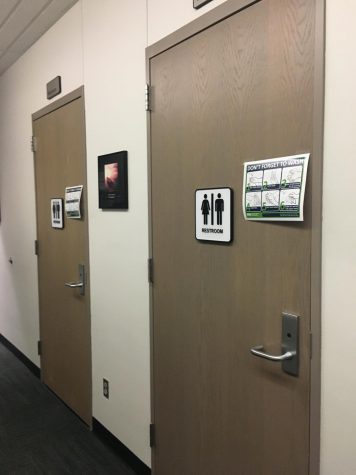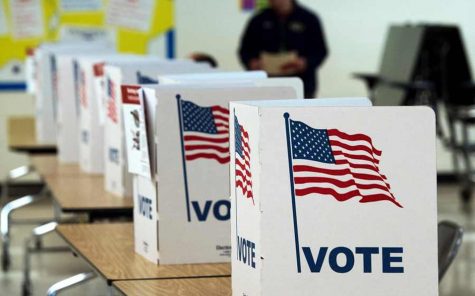EHS needs trigger warnings
March 31, 2021
Note: As an editorial staff of all white women, we do not speak for everyone at Eagan High School and do not personally know all of the trauma our peers, and especially students of color, have experienced. See our linked resources below for more perspectives.
Trigger warnings are warning statements placed before any potential trauma trigger, also known as triggering content. They are used so that before viewing any potentially traumatizing material, anyone can have the option to skip viewing, hearing, or reading it and should directly state what the material contains without going into any further detail. An example of this would be “TW: eating disorders.” This clearly states what the content is about without providing too little or too much information. In order to be effective, trigger warnings must be paired with the option to opt-out of viewing content such as scrolling or skipping past it, stepping out of a room, or completing an alternate, nontraumatic assignment.
Eagan is not doing trigger warnings correctly, if at all.
During our time at Eagan High School, we’ve seen multiple displays of potentially triggering and traumatizing content for BIPOC students. When it comes to topics such as police brutality, racism, sexual harassment, abuse, homophobia, transphobia, and more, it’s important to allow students the ability to opt-out or avoid material that may put their health at risk (see the resources below to learn more about how traumatizing content endangers the health of students). Requiring students to view police brutality, participate in class discussions regarding human rights, or read literature with slurs they’ve heard targeted at them is an act of violence against these students.
Student life is often overwhelming on its own, both in and out of school, and students shouldn’t have to worry about the curriculum piling on to their stress and trauma. A trigger warning without leaving the option for students to opt-out isn’t effective in protecting students from trauma. There is a precedent that students cannot leave class, and if they wish to, they will suffer on tests on that material. The truth is, there are ways to still provide information on sensitive topics to these students without altering the curriculum or forcing them to sit through a potentially triggering experience. Instead of forcing students to view police brutality, offer an opportunity to do a writing/reading assignment on a similar subject.
In addition, in an effort to make the conversation more comfortable, this sensitive content is often brushed over and taught in an extremely nonchalant way. However, this lack of acknowledgment is often what leads students to believe that the option to opt-out is not available. Adding trigger warnings, addressing that the material might be difficult for some students to learn, and offering an alternate way for these students to succeed in the class is something all teachers can improve on. For students, being aware that you have an option when it comes to learning about topics that are potentially triggering is the first step in creating change.
Abusive, horrific, and traumatic curriculum shouldn’t be forced on students just because “they need to know.” When lessons are taught specifically for majority or non-oppressed students to understand the “minority experience,” it is putting oppressed students at risk and directly causing them harm by having to relive their trauma.
One of the most valuable aspects of education is addressing and being able to discuss the more ugly parts of humanity without stigma. However, it is important to acknowledge that this may be difficult for some students due to their own experiences. Using trigger warnings in school isn’t a way to change the curriculum for everyone, rather let students make the decision for themselves if it will or will not be harmful to them. It’s important that we still teach this content without forcing students into a situation that could hurt them.
One main aspect of this is opening up about mental health and eating disorders in classes, specifically psychology classes. It is extremely important to discuss these topics in classes where we learn about the makeup of the brain, and having conversations about them will help ease the stigma away. However, not warning students about these conversations can be extremely harmful. We will never know what our peers are going through, but to assume they can handle something like that is disrespectful to students and their struggles. Mental health and eating disorders are sensitive topics for many people, and while it is important for everyone to be aware and open about them, some students are all too familiar and can be harmed by these exact conversations. When a student sees a trigger warning related to their personal trauma, it protects them from feeling forcibly vulnerable amongst their peers.
It is also important to address how students should be acting when learning about something that may be triggering. If something is given a trigger warning, this is not the time to be goofing around or doing something else. Students must have respect in these situations, giving their full attention to the information, unless of course, it is triggering to them. It’s also important that students are respectful of their peers who choose to opt-out during these tough conversations. The privacy and gravity of this situation must be a priority.
In light of the past year, Eagan High School has formed its long-overdue anti-racism council and commitment to being inclusive and welcoming. While their website displays a firm commitment to becoming an actively anti-racist community, many parts of the school curriculum have yet to catch up. Including trigger warnings is a logical step towards achieving an anti-racist and empathetic Eagan community.
Resources:
800-273-8255: National Crisis Hotline
This article highlights the need for trigger warnings in all environments, especially academic ones.
This article gives teachers a perspective on students dealing with trauma in school.
This article highlights how students’ education is affected by their trauma.






















